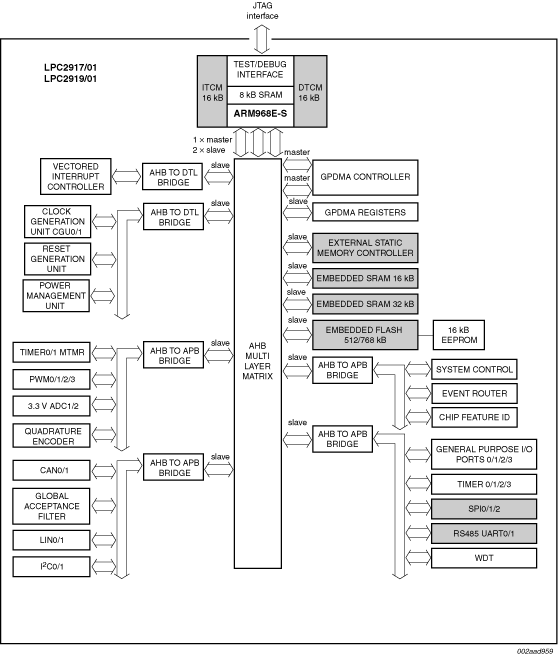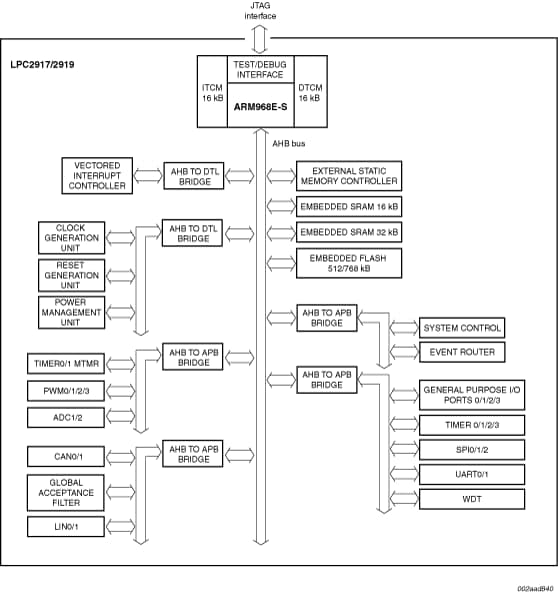The LPC2917/2919/01 combine an ARM968E-S CPU core with two integrated TCM blocks operating at frequencies of up to 125 MHz, CAN and LIN, 56 kB SRAM, up to 768 kB flash memory, external memory interface, two 10-bit ADCs, and multiple serial and parallel interfaces in a single chip targeted at consumer, industrial, medical, and communication markets. To optimize system power consumption, the LPC2917/2919/01 has a very flexible Clock Generation Unit (CGU) that provides dynamic clock gating and scaling.


